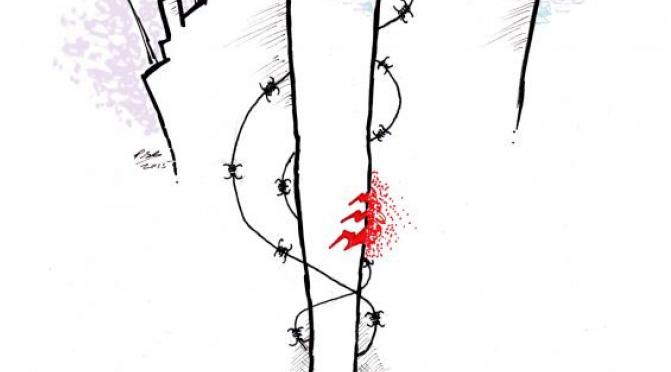Self Harm: The Inner Scream
An alarming report about the extent of self harm in Northern Ireland has just been published. Scope looks at the facts.
What is Self-harm?
Self harm takes a variety of forms: often these are physical, like cutting yourself, or taking poison or over-dosing on drugs. Sometimes it can be a little less obvious: like staying in an abusive relationship or drinking too much. There are many forms of self-harm. Sadly, amongst young people, cutting is the most common.
It is a way of people communicating deep distress, sometimes by punishing themselves, sometimes simply by distracting themselves from whatever the source of pain and distress that is becoming too hard to bear.
It is often a reaction to being overwhelmed by grief, anger, frustration, self-hatred, guilt or fear: and the self-harming activity can make people feel a little bit better, for a while. So it is a reaction to trauma, to events or feelings that people find over-whelming. Some experts describe it as a form of communication of things people can’t put into words, or even their thoughts: an inner scream.
Why do People Self-harm?
Self-harm is an indicator of trauma. Many people who self-harm have had difficult childhoods, often with very little emotional support – so as they grow up they have nobody to confide in, and no ways of expressing their feelings. Consequently they tend to internalise their anxieties.
They may have been physically or sexually abused, neglected, isolated or bullied: they may have been in care, in hospital or other institutions. People subjected to such trauma often have very low self-esteem and will be tempted to “punish themselves” when they are feeling in a bad place, or when something goes wrong. In other instances self-harmers have talked about feeling so distressed and traumatised, that they just can’t bear it any longer, and that hurting themselves distracts them from their mental anguish.
Quite often people do not feel pain when they harm themselves as a result of natural opiates which occur in the body. This is compounded by the fact that badly traumatised people can feel detached both from their own bodies and their surroundings: sometimes self-harm is a means to feel something, and to remind themselves they are real and alive.
This is a hugely complex area where there are no definitive answers, as motive and circumstances vary so much. However, the “Inner Scream” is getting louder and is evidence of increased levels of mental ill-health.
Who Self-harms?
Females are around three times more likely than males to self-harm. This is thought to be because women will more often be in a caring role and can, as a result, be so used to putting others first that they don’t care about themselves.
Male self-harm is on the rise, and experts say a fact there is because a “macho mentality” can inhibit men from expressing their feelings, which can become internalised, leading some to self-harm.
Most alarmingly there has been a significant rise in self-harm amongst the young, affecting both females and males: this is a growing trend which is of major concern.
Other categories are people with mental ill health, those made homeless, and excess alcohol consumption is also a major factor in self-harming episodes.
Amongst young self-harmers, a low sense of self-esteem and feelings of helplessness are common drivers. The impact of recession and rising levels of youth unemployment are undoubted drivers.
What to do if you know someone who self-harms
It is very important to show that you care. Many people who self-harm feel worthless and unwanted and showing that you are concerned about the person and not just the injury is very important. It is also important to direct them towards a counselling service like New Life Counselling. They will need help and encouragement to rediscover their self-worth and to realise that no situation is hopeless and that they can re-build their lives and move beyond the pain and despair that many sufferers currently feel.
It is important as well to challenge the perception often held, not just by some relatives and friends, but also by some members of the medical profession that self-harm is merely a cry for attention. It goes much, much deeper than that: it is a growing problem not just for individuals and their loved ones, but for society as a whole – and it is an issue we need to devote more resources to dealing with.
The Situation in Northern Ireland
Professor Mike Tomlinson of Queen’s University recently compared hospital admissions caused by self-harm in nine cities across Britain, Northern Ireland and the Irish Republic. It found that Derry had the highest such admissions, with 611 in 2009.This was significantly higher than that of Manchester, Leeds, Oxford, Limerick, Cork, Galway and Waterford.
Other research has revealed that one in ten youngsters of school age in Northern Ireland have self-harmed.
This is a growing and worrying trend. and it is good to see the Public Health Agency focusing on it with its latest report
Share Article...
Join the Conversation...
We'd love to know your thoughts on this article.
Join us on Twitter and join the conversation today.
Join Our Newsletter
Get the latest edition of ScopeNI delivered to your inbox.



 One final article – a goodbye
One final article – a goodbye A story to inspire ...
A story to inspire ...  The shameful waste of our money
The shameful waste of our money  Fund's new strategy unveiled
Fund's new strategy unveiled The true cost of deprivation and division
The true cost of deprivation and division  An ancient key to longevity
An ancient key to longevity